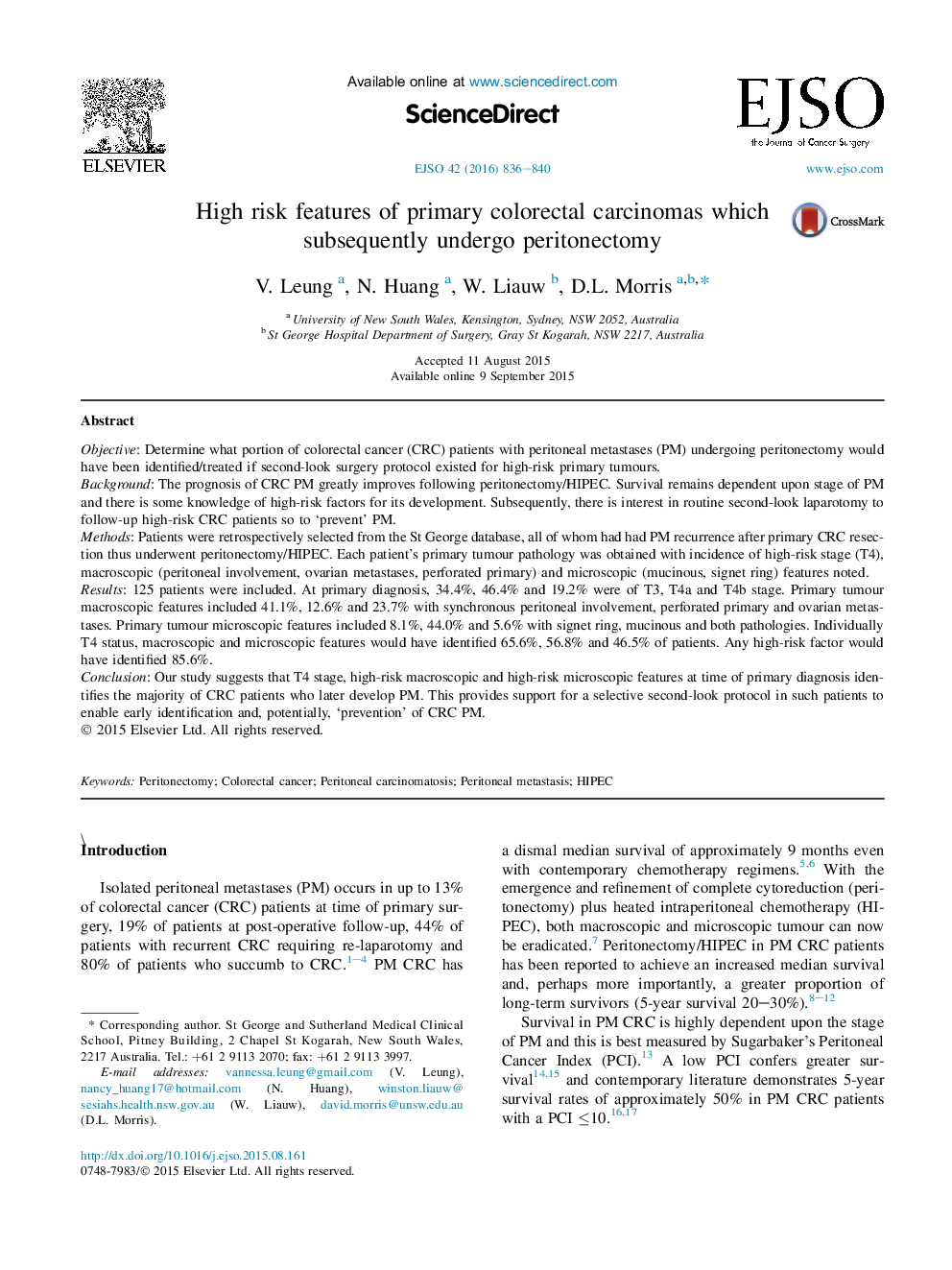| Article ID | Journal | Published Year | Pages | File Type |
|---|---|---|---|---|
| 3984542 | European Journal of Surgical Oncology (EJSO) | 2016 | 5 Pages |
ObjectiveDetermine what portion of colorectal cancer (CRC) patients with peritoneal metastases (PM) undergoing peritonectomy would have been identified/treated if second-look surgery protocol existed for high-risk primary tumours.BackgroundThe prognosis of CRC PM greatly improves following peritonectomy/HIPEC. Survival remains dependent upon stage of PM and there is some knowledge of high-risk factors for its development. Subsequently, there is interest in routine second-look laparotomy to follow-up high-risk CRC patients so to ‘prevent’ PM.MethodsPatients were retrospectively selected from the St George database, all of whom had had PM recurrence after primary CRC resection thus underwent peritonectomy/HIPEC. Each patient's primary tumour pathology was obtained with incidence of high-risk stage (T4), macroscopic (peritoneal involvement, ovarian metastases, perforated primary) and microscopic (mucinous, signet ring) features noted.Results125 patients were included. At primary diagnosis, 34.4%, 46.4% and 19.2% were of T3, T4a and T4b stage. Primary tumour macroscopic features included 41.1%, 12.6% and 23.7% with synchronous peritoneal involvement, perforated primary and ovarian metastases. Primary tumour microscopic features included 8.1%, 44.0% and 5.6% with signet ring, mucinous and both pathologies. Individually T4 status, macroscopic and microscopic features would have identified 65.6%, 56.8% and 46.5% of patients. Any high-risk factor would have identified 85.6%.ConclusionOur study suggests that T4 stage, high-risk macroscopic and high-risk microscopic features at time of primary diagnosis identifies the majority of CRC patients who later develop PM. This provides support for a selective second-look protocol in such patients to enable early identification and, potentially, ‘prevention’ of CRC PM.
